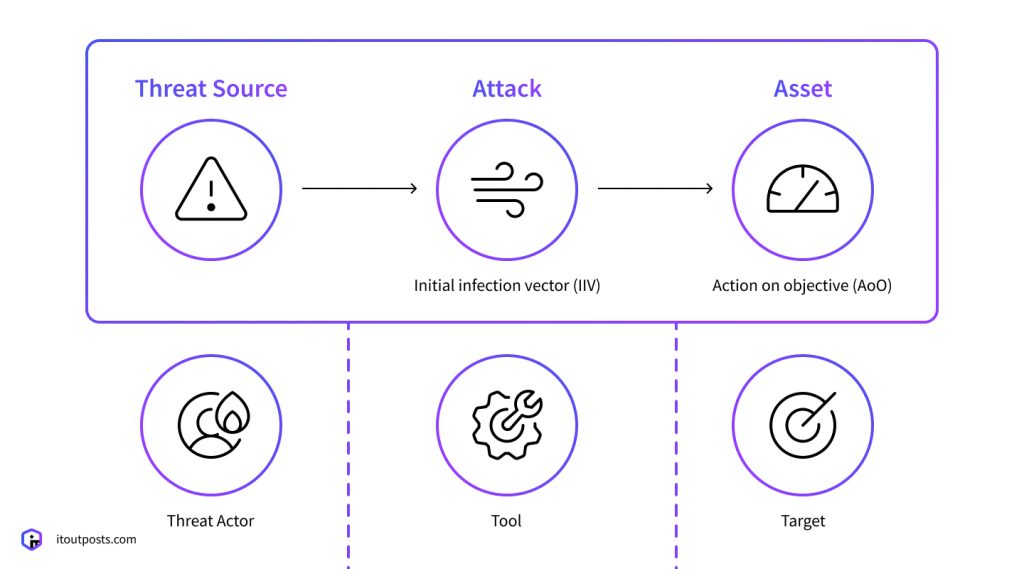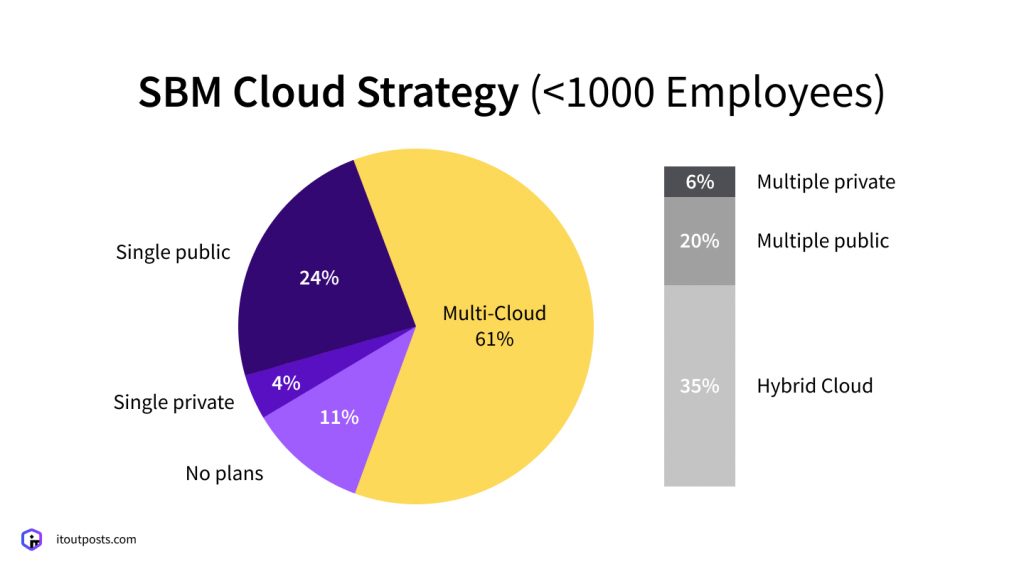Contents
In order to scale software systems effectively, it is considered to be a cost-efficient method to transfer them to the cloud. Companies are able to deploy and exploit applications at significantly lower costs due to dynamic computing resource distribution capacities. The amount of server capacity you need at the moment can be utilized – no more. Also, there is no need to purchase servers.
However, there are still a few risks in cloud migration that you should be aware of before implementing the process. Discover broad risks and approaches to migrating into the cloud.
1. Unclear Cloud Migration Strategy
As a first step, you need to decide if you want to manage several cloud platforms or just one. There are pros and cons to each strategy.
A vendor lock-in could occur if you choose only one cloud provider. As an alternative, your code can be shared between several cloud providers, so workloads can be balanced between them.
The fee is higher and the management tools are different for each provider making things quite complex, but it provides more freedom.
The combination of AWS and Microsoft Azure is a popular one today. 78% of organizations use both Amazon Web Services and Microsoft Azure to avoid the migration risk in cloud computing, according to a report by McAfee.
It is also important to decide what to migrate from your on-premise data centers to the cloud and what to leave there.
A hybrid strategy (combining a public cloud and an on-premise data center) requires planning. You cannot migrate every part of your infrastructure. It is not advisable to store financial records, client information, in the public cloud.
As a result, GDPR standards do not allow healthcare and finance organizations to store sensitive information on public cloud platforms. Data critical to the company must be hosted on physical servers located in a specific region.
The majority of companies with sensitive data store it at their on-premises data centers and utilize public cloud platforms for their computing power, flexibility, connectivity, and scalability.
2. Losing Сontrol of Data and Processes

Public cloud computing concerns many businesses when it comes to transferring their data and applications. With public cloud solutions such as AWS, Google Cloud, and Azure, you lose full control. Even managing your security processes is impossible without an on-premise infrastructure.
Solution
Cloud migration is described using a flight analogy by Gartner. In contrast to driving your own car, you give up control of the flight to the crew. We may become anxious or worried as a result.
The flight crew takes additional precautions to ensure the safety of every flight. In contrast, you may not perform regular checks on your car unless problems occur.
Changing your perception of control is the first step. For cloud computing threats to be eliminated, consider the following:
- Make sure your Identity Access Management strategy is strong. Reduce unauthorized access and accountability by limiting user access personally.
- Along with protecting data, encryption can also help segregate and isolate it. Even on public cloud platforms, this approach can prove useful.
- You should request compliance reporting and security monitoring from your provider.
- Contracts with vendors should be analyzed and negotiated. Striking some favorable terms could help you reduce cloud vulnerability.
3. Inadequate Preventive Security Checks
The problem is, the majority of companies cannot boast the presence of qualified security experts that will assure the full security of your organization’s migration to the cloud. As a consequence, vital info can leak due to the most trivial reasons on the client’s side (such as uploading harmful data to the cloud or not having a good antivirus).
Solution
It may not be possible for you to have the expertise of a specialist to solve all of your cloud migration problems. The system administrator won’t be able to handle transferring your important data to the cloud – they aren’t technically savvy in this context.
The best option is to choose a professional who works with outsourcing. You will thus be able to affordably get quality assistance in the matter.
Security problems and leaks are best prevented by preparing the new cloud environment meticulously so as to ensure that it takes into consideration all the nuances of the new infrastructure.
4. Additional Latency
When it comes to cloud migration risk assessment , one of the most underestimated risks is the risk of unwanted latency. A cloud application, database, or service can cause this. When it comes to IoT devices, e-commerce sites, video streaming platforms, and cloud gaming platforms, latencies are especially important since they contribute to the customer experience. The delay of a few seconds can be detrimental to your business if you have applications that require immediate responses. It can be frustrating and disappointing, and it can also damage your brand image.
Solution
The first step to preventing latency issues is to understand what causes it: the geographical separation of client devices and servers or a misconfigured Quality of Service (QoS). To fix latency issues, there are several methods:
- Improve the network’s localization and optimization;
- Track traffic flow by segment;
- Connect multiple clouds;
- Internet should be offloaded at the edge;
- Engage business partners and ecosystems for data exchanges and digital commerce.
For those who are unable to use the above methods or cannot afford them, it may be a good idea to retain such applications on-premise.
5. Infrastructure Vulnerabilities

Migrating to the cloud is heavily reliant on evaluating the infrastructure and ensuring it is ready for a new environment. A healthy IT infrastructure will impact the risks of migrating to the cloud and the opportunities that may arise. Migration is more difficult for old, legacy systems. Compared to traditional architectures, modern architectures rely on microservices and are easier to migrate.
Cloud computing vulnerabilities, however, can be reduced in several ways.
Solution
First of all, check your infrastructure for vulnerabilities and conduct a cloud readiness assessment. You will then be able to oversee the development of the cloud infrastructure.
If you have not yet incorporated infrastructure as code, we recommend paying special attention to it.
A further benefit of IaC is that they help reduce the risks of cloud migration because it only impacts part of the infrastructure. Your cloud infrastructure can even be designed and created from scratch if you want.
6. Long Migration Process

For large enterprises with legacy applications developed several decades ago, moving to the cloud can be a long and tedious process. Bottlenecks are also common in businesses with distributed processes and environments. If you wait this long, it may lead to a reduction in revenue. It is even possible to lose some customers during downtimes.
Solution
The process of migrating to the cloud usually takes a year. You can reduce migration time by following the steps below:
- Analyze extensively: We’ve already spoken about the importance of analyzing your architecture, applications, and processes in depth. It helps identify potential problems in advance and helps you avoid them.
- Experts should be involved: Anyone who is familiar with cloud computing from every angle should conduct this assessment. Using qualified engineering personnel, IT Outposts can detect cloud migration risks and prevent them.
- Make sure only what’s necessary is migrated: Make sure you don’t waste time and money transferring apps and data you don’t need. Improve productivity and service by optimizing critical resources.
7. Risks to Productivity
As soon as the migration is finished, you’re on your own. It will be the responsibility of your IT team to ensure that everything runs smoothly and threats are kept at bay.
Furthermore, you should ensure that the right tools and resources are available for optimum productivity. In addition to that, you are responsible for patches and maintenance.
When you’re in a small business, things can really get out of hand.
Solution
You can keep up with your competitors by using managed cloud services. The platform is maintained and optimized by the provider. Security and protection against cyber threats are also their responsibilities.
Conclusion
So you see, cloud migration is not a challenging task and provides mitigation against security issues that cannot be eliminated. For reducing cloud migration risks and mitigation, professional assistance is definitely necessary.
IT Outposts as a cloud migration service provider is happy to answer any questions you may have. Our team has dedicated professionals with a strong interest in Cloud Solutions, DevOps, Infrastructure, and Architecture Design.

I am an IT professional with over 10 years of experience. My career trajectory is closely tied to strategic business development, sales expansion, and the structuring of marketing strategies.
Throughout my journey, I have successfully executed and applied numerous strategic approaches that have driven business growth and fortified competitive positions. An integral part of my experience lies in effective business process management, which, in turn, facilitated the adept coordination of cross-functional teams and the attainment of remarkable outcomes.
I take pride in my contributions to the IT sector’s advancement and look forward to exchanging experiences and ideas with professionals who share my passion for innovation and success.